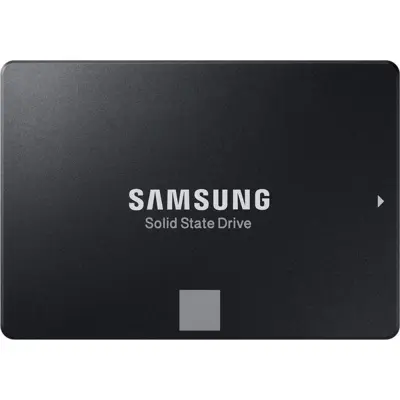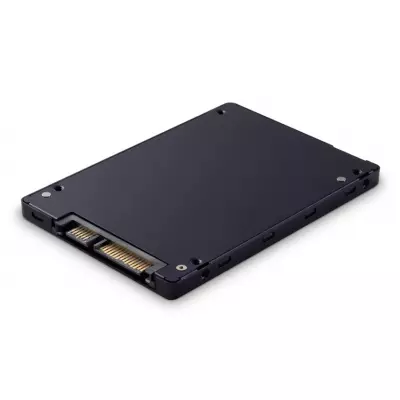Samsung MZ-5S71000-0D3 100GB SATA 2.5" SFF SSD

Shipping $99+
$194.00 $195.00
Samsung MZ-5S71000-0D3 Product Specs
| Brand | Samsung |
| Capacity | 100GB |
| Interface Type | SATA |
| Data Transfer Rate | 3Gb/s |
| NAND Flash Memory Type | Single-Level Cell (SLC) |
| Form Factor | 2.5" SFF |
Samsung MZ-5S71000-0D3 Description
The Samsung MZ-5S71000-0D3 100GB SATA 2.5" SFF SSD is a reliable and high-performance solid-state drive designed for enterprise and server applications that require fast data access and durability. This 2.5-inch small form factor (SFF) SSD is perfect for use in data centers, servers, and high-demand computing environments where SATA interface compatibility is essential. With a SATA interface supporting data transfer rates up to 3Gb/s, it integrates seamlessly with a wide range of server models and storage systems that support SATA drives.
Key specifications of this Samsung SSD highlight its robust build and efficient performance:
- Brand: Samsung
- Capacity: 100GB, ideal for caching, boot drives, or applications requiring fast read/write speeds
- Interface Type: SATA, ensuring broad compatibility with many servers and storage arrays
- Data Transfer Rate: 3Gb/s, delivering reliable throughput for business-critical workloads
- NAND Flash Memory Type: Single-Level Cell (SLC), known for superior endurance and performance compared to multi-level cell types
- Form Factor: 2.5" Small Form Factor (SFF), fitting standard drive bays in servers and storage enclosures
For maintenance or replacement needs, consider the following compatible spare parts that match or complement this SSD model:
- Micron MCCOE1HG5MXP-0VB (Part Number: MCCOE1HG5MXP-0VB)
- Samsung MZ5S7100XMC0-000D3 (Part Number: MZ5S7100XMC0-000D3)
- Micron MCC0E1HG5MXP-0VBD3 (Part Number: MCC0E1HG5MXP-0VBD3)
- Samsung MZ5S7100XMCO-000D3 (Part Number: MZ5S7100XMCO-000D3)
- Micron MCC0E1HG5MXP (Part Number: MCC0E1HG5MXP)
- Micron MCCOE1HG5MXP-OVB (Part Number: MCCOE1HG5MXP-OVB)
- Samsung MZ5S7100XMCO-000D3-D (Part Number: MZ5S7100XMCO-000D3-D)
- Samsung MZ-5S71000XMC0-000D3 (Part Number: MZ-5S71000XMC0-000D3)
- Micron MCCOE00G5MXP-0VB (Part Number: MCCOE00G5MXP-0VB)
- Micron MCCOE00G5MXP-0VB03 (Part Number: MCCOE00G5MXP-0VB03)
- Micron MCCOE1HG5MXP-0VB03 (Part Number: MCCOE1HG5MXP-0VB03)
Payment Options
All Credit Cards Accepted + PayPal
PO Accepted from Qualified Businesses and Government Entities
Delivery Options
Overnight and Express Delivery in USA
Get within 1 to 3 days
Free Ground in USA
2 to 6 days (Varies by location)
$49 Ground Shipping To Canada
International Delivery Options Available
Contact Us For Detail
Return & Warranty
30 days return
Warranty vary by product please see our Policies page
Trusted by 5000+ IT Managers, System Integrators & Data Center Experts


Easy Returns
"We purchased the wrong part by mistake. Boost hardware made it easy to return and quickly issued me a refund.""

Lowest Price By Far
"We were able to purchase 10x HP 782995-001 for 25% less than the next lowest price. Very impressed with the quick shipping and lack of issues."

Excellent Customer Service
"Excellent customer service; they got in touch with me right away. They upgraded my next order to free 2-day shipping."

![]() We found 11 subs for the Samsung MZ-5S71000-0D3
We found 11 subs for the Samsung MZ-5S71000-0D3

- Capacity: 100GB
- Interface: SATA
- Form Factor: 2.5" SFF
- Brand: Sun
- NAND Flash Memory Type: Single-Level Cell (SLC)
- Data Transfer Rate: 3Gb/s

- Capacity: 100GB
- Interface: SATA
- Form Factor: 2.5" SFF
- Brand: Sun
- NAND Flash Memory Type: Single-Level Cell (SLC)
- Data Transfer Rate: 3Gb/s

- Capacity: 100GB
- Interface: SATA
- Form Factor: 2.5" SFF
- Brand: Sun
- NAND Flash Memory Type: Single-Level Cell (SLC)
- Data Transfer Rate: 3Gb/s

- Capacity: 100GB
- Interface: SATA
- Form Factor: 2.5" SFF
- Brand: Sun
- NAND Flash Memory Type: Single-Level Cell (SLC)
- Data Transfer Rate: 3Gb/s

- Capacity: 100GB
- Interface: SATA
- Form Factor: 2.5" SFF
- Brand: Sun
- NAND Flash Memory Type: Single-Level Cell (SLC)
- Data Transfer Rate: 3Gb/s

- Capacity: 100GB
- Interface: SATA
- Form Factor: 2.5" SFF
- Brand: Sun
- NAND Flash Memory Type: Single-Level Cell (SLC)
- Data Transfer Rate: 3Gb/s

- Capacity: 100GB
- Interface: SATA
- Form Factor: 2.5" SFF
- Brand: Sun
- NAND Flash Memory Type: Single-Level Cell (SLC)
- Data Transfer Rate: 3Gb/s

- Capacity: 100GB
- Interface: SATA
- Form Factor: 2.5" SFF
- Brand: Sun
- NAND Flash Memory Type: Single-Level Cell (SLC)
- Data Transfer Rate: 3Gb/s

- Capacity: 100GB
- Interface: SATA
- Form Factor: 2.5" SFF
- Brand: Sun
- NAND Flash Memory Type: Single-Level Cell (SLC)
- Data Transfer Rate: 3Gb/s

- Capacity: 100GB
- Interface: SATA
- Form Factor: 2.5" SFF
- Brand: Sun
- NAND Flash Memory Type: Single-Level Cell (SLC)
- Data Transfer Rate: 3Gb/s

- Capacity: 100GB
- Interface: SATA
- Form Factor: 2.5" SFF
- Brand: Sun
- NAND Flash Memory Type: Single-Level Cell (SLC)
- Data Transfer Rate: 3Gb/s
Customer Reviews
Availability
New Condition: Chat For Price
Refurbished Condition: In Stock
Delivery Options
Overnight and Express Delivery in USA
Get within 1 to 3 days
Free Ground in USA
2 to 6 days (Varies by location)
$49 Ground Shipping To Canada
International Delivery Options Available
Contact Us For Detail
Payment Options
All Credit Cards Accepted + PayPal
PO Accepted from Qualified Businesses and Government Entities
Return & Warranty
30 days return
Warranty vary by product please see our Policies page

